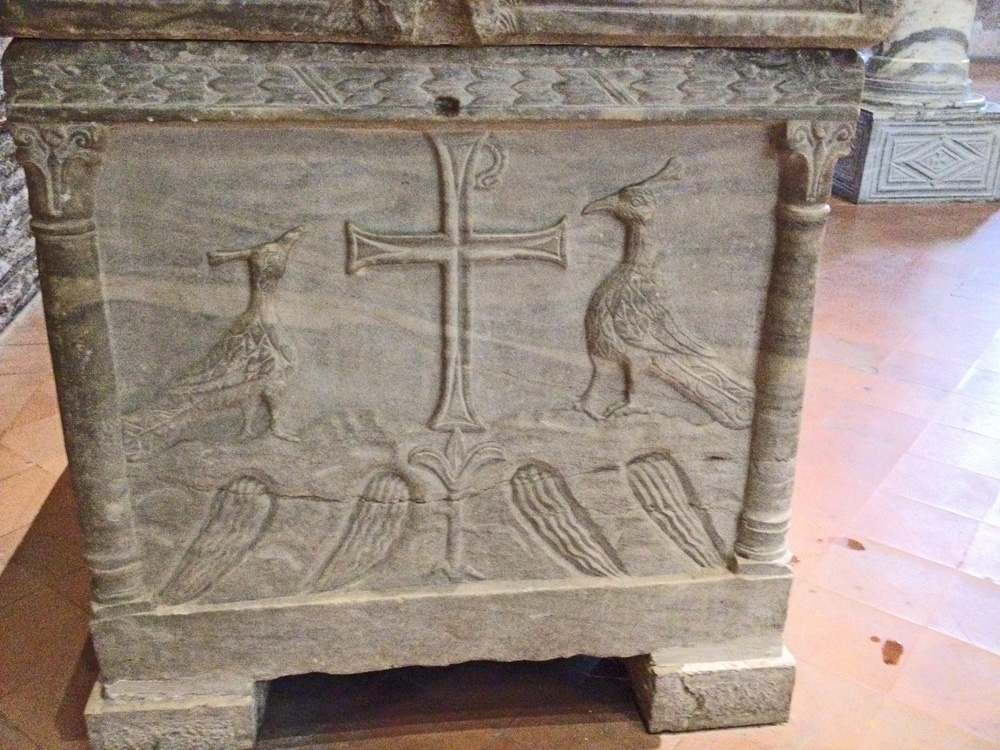Staurogram with Peacocks

6th century, possibly later
Stone
Basilica of Sant'Apollinare in Classe, Ravenna, Italy
This is the left end of a sarcophagus displayed in the basilica, which was built in the 6th century. The peacocks have been symbols of immortality since ancient Greek times, and in that function they are akin to the smaller birds seen on
this sarcophagus from the 4th century and
this one
from the 5th. The small "tail" on the cross makes it a staurogram, a symbol of the crucified Christ. From the hill on which it stands flow the four rivers of Paradise (Genesis 2:10), which Isidore of Seville interprets as "the eternal flow of joy" (Glossa Ordinaria, I, 71). The symbolism thus bespeaks the salvation gained by Christ's sacrifice on the Cross.
Below the cross is a tree stylized fountainhead spouting three jets of water and representing the river in Genesis 2:10 that waters Paradise and feeds the four rivers. A similar figure is seen on a number of other sarcophagi.
View this image in full resolution.
View the right end of the sarcophagus.
Read more about the peacock and staurogram symbols.
Photographed at the basilica by Claire Stracke, shared under Attribution-NonCommercial-ShareAlike license.